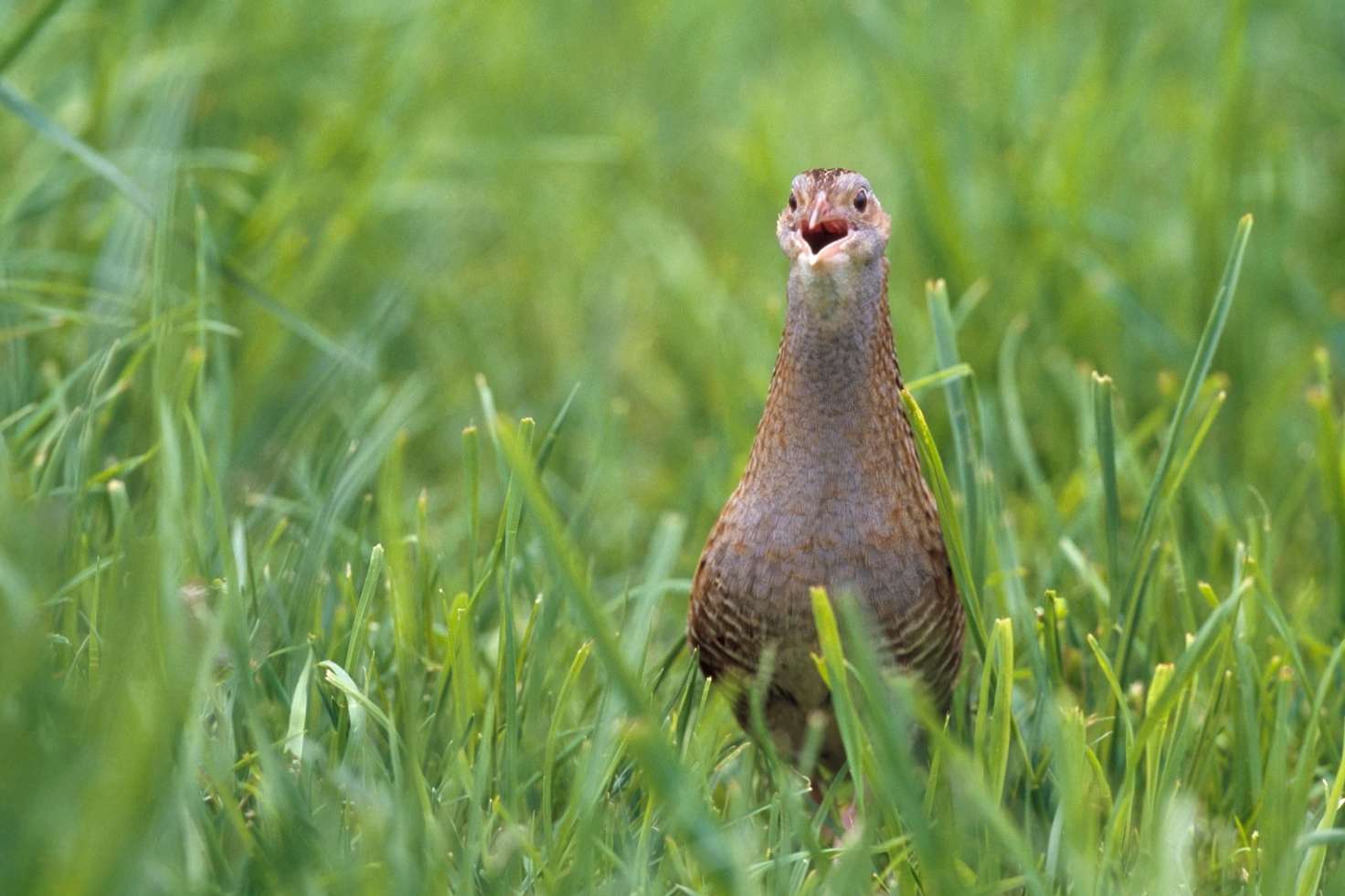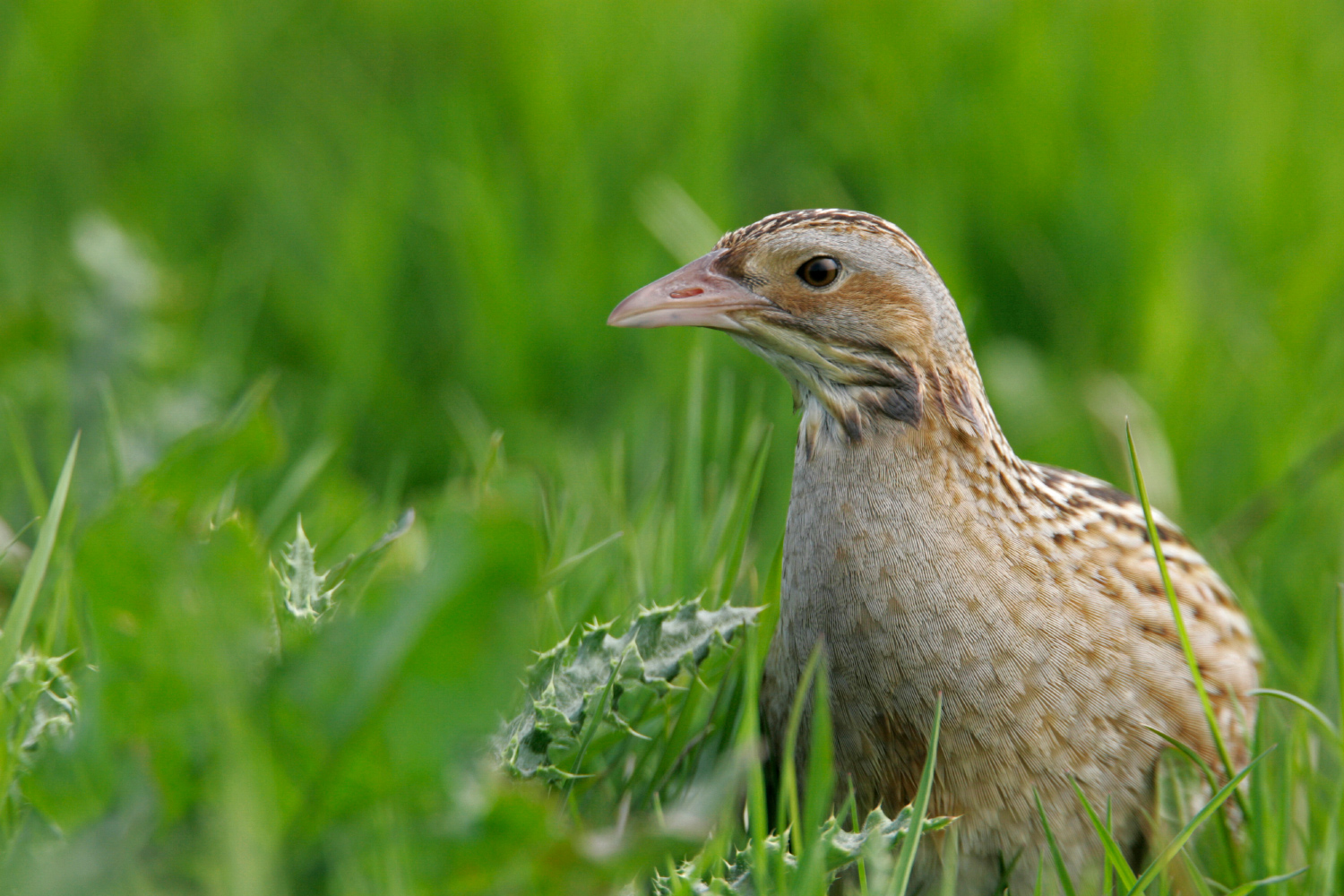Scottish Corncrake numbers at lowest level since 2003
RSPB Scotland has announced that Corncrake numbers have decreased for the third year running, with 2017's count of calling males being the lowest total recorded since 2003.
Only 866 calling males could be found during the annual survey, a drop of 17 per cent from 2016 and an alarming 33 per cent down from the 2014 high of 1,289 males.
Among the most worrying results was the discovery that Benbecula’s population had declined by 64 per cent since last year, while the Durness area of Highland witnessed a 53 per cent drop over the same period. However, there were glimmers of hope: Barra and Vatersay’s Corncrake population had increased by 47 per cent on 2016.
The overall sharp decline has prompted concern from RSPB Scotland that the long-term survival of Corncrake as a breeding species in Scotland is now under threat. The organisation is calling for renewed action to ensure that the Scottish government and the conservation community do all they can to work with landowners and crofters to protect the species. Numbers haven’t been this low since 2003, when just 836 males were recorded.

Calling Corncrakes, such as this male, have shown a worrying decline in their Scottish strongholds over the past three years. Photo: Andy Hay (rspb-images.com).
Corncrakes are shy and difficult-to-see birds that migrate from their wintering grounds in Africa to breed in a few isolated pockets in Scotland, mostly on crofts or farmland on islands and along the far north-west coast.
Once widespread across Britain and Ireland, they suffered a huge reduction in both range and population in the 19th and 20th century as agriculture intensified and the hay harvest was cut earlier. There have been unprecedented declines in numbers throughout the range of the species, accompanied by a 76 per cent contraction in range since 1970. By the 1990s the annual decline was so great that, had it continued, the species would have been lost in Britain and Ireland within 10-20 years. As a result of conservation measures in the core areas, the decline was finally halted with the lowest point in Britain in 1993 (480 calling males) and in the Republic of Ireland in 1994 (129 calling males). Since then, numbers slowly increased to 2014’s high point.
While there may be several reasons behind the recent declines, including problems related to the species' wintering grounds or during migration, there is concern that recent changes to these schemes could be contributing to the declines. The gap between the old Scottish Rural Development Programme Rural Priorities Scheme (SRDPRP) ending and new agri-environment Climate Scheme (AECS) starting has seen fewer areas being managed to benefit Corncrakes. The uptake in AECS so far is considerably lower than in SRDPRP, though there is a chance this may improve over time.
In addition, payment rates provided by the government to delay mowing are now lower, which may reduce the incentive to mow later in the year and could lead to fewer Corncrake chicks surviving. As the species is naturally short-lived, it’s crucial that large numbers of chicks are successfully reared each year.
Paul Walton, Head of Habitats and Species at RSPB Scotland, said: “The crex-crex call of Corncrake is unmistakeable, but in recent years has become something even fewer of us are likely to hear – in just three years Scotland has lost a third of its calling male population. While some areas have seen an increase in numbers this third successive annual fall in numbers is incredibly worrying.
“For many years the increases in Corncrake numbers have been rightly celebrated as one of the great successes of agri-environment schemes, and a fine example of what can be achieved by crofters, farmers, government and conservationists working together. However, the gains made for this rare species now face being unravelled and lost, and their future is once again looking increasingly uncertain in Scotland unless action is taken.”

Corncrake has also declined across many parts of western Europe, as agricultural practices have changed and intensified. Photo: Andy Hay (rspb-images.com).
RSPB Scotland is calling on the Scottish government to work with the charity to ensure the long-term survival of breeding Corncrakes . It is vital that the upcoming application window for AECS in 2018 is adequately promoted with application support provided to encourage as much uptake as possible in these areas. Additionally, robust advice must be provided to all land managers on supporting threatened species and the wider environment.
Looking further ahead, the next iteration of Scotland’s agricultural and land management policy must include better delivered and implemented support mechanisms for nature, with priority given to rare species such as Corncrake. The principle of ‘public money for public goods’ should guide any future rural policy. Farmers and crofters should be financially supported using public funds for delivering the things that are valued as a society but not paid for by the market, including a thriving natural environment, and vibrant rural communities.
Mr Walton continued: “While we are extremely concerned that these recent declines will turn into long-term trends if no action is taken, there is still time to prevent this from happening. Right now there is a great opportunity here for the Scottish government to take decisive positive action and work with conservation organisations in designing a future scheme, not only to help Corncrakes, but also to support crofters and farmers deliver as many benefits as possible for our country’s incredible wildlife.”

